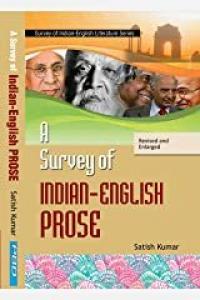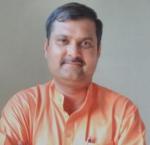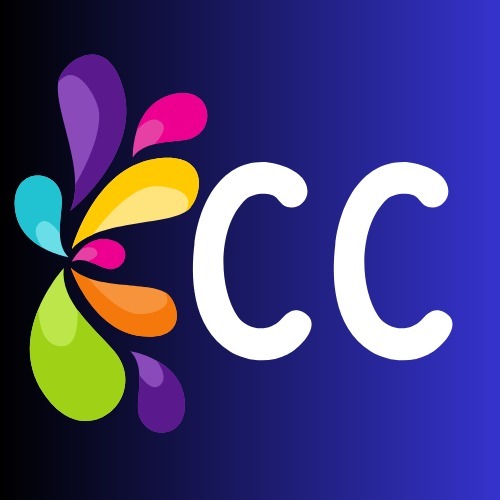Creation and Criticism
ISSN: 2455-9687
(A Quarterly International Peer-reviewed Refereed e-Journal
Devoted to English Language and Literature)
Vol. 05, Joint Issue 16 & 17 : Jan-April 2020

Book Review
A Survey of Indian English Prose by Satish Kumar
Satish Kumar. A Survey of Indian English Prose. Bareilly: Prakash Book Depot, 1993, rev.ed. 2020. Pp. 376. Rs. 450/-. ISBN: 978-81-7977-656-5
Reviewed by Abnish Singh Chauhan
A Survey of Indian English Prose, a volume from PBD’s celebrated author Satish Kumar, presents a comprehensive account of the growth and development of Indian English Prose from Raja Rammohan Roy, the grandmaster of Indian Renaissance, to Gurcharan Das, the acclaimed author and management consultant of contemporary India, marked by common sense and rational expressions. The volume proceeds chronologically in eighteen parts including ‘Prologue’ and ‘Denouement’, extending from the beginning of English as official language in the 18th century India to the present day creative experiments of Indian prose masters.
Along with the vivid profiles of more than one hundred big and small authors and their exemplary prose works, the volume compresses a large treasure of information into 376 pages. The coverage catches the attention of the readers even in the ‘Prologue’, where the author highly emphasizes on the successful use of prose by Indian writers and proudly quotes a line — “Prose is not inferior to poetry.” After ‘Prologue’, the book begins with ‘Indian Renaissance’ (1820-1900), the golden era of the evolution of prose in India, and the contribution of its prominent thinkers, social reformers and persuasive statesmen like Raja Rammohan Roy, Ram Gopal Ghose, Keshav Chandra Sen, Dadabhai Naoroji, Mahadev Govind Ranade, Bal Gangadhar Tilak, Gopal Krishna Gokhale, R.C. Dutt, etc. The author also unequivocally chronicles the saint writers— Swami Vivekananda and Swami Ramatirtha, who highly influenced the entire course of the development of prose (also poetry) with their rich contents and stylistic devices, particularly during the ‘Spiritual Renaissance’ in the 19th century India, through their cultured oratory and studious writings. They also paved the way to the great writers of the coming generation (‘Towards the Dawn’— 1901-1947)— Rabindranath Tagore, Sri Aurobindo, Shri Paramhansa Yogananda, Mahatma Gandhi, Jawaharlal Nehru, S. Radhakrishnan and many others. The prose writers of this period were attempting social prose, cultural prose, political prose, journalistic prose and philosophical prose in the form of autobiographies, memoirs, diaries, travelogues, letters, essays, articles, criticism, etc.
The next section of the book— ‘Modern Indian English Prose’ (1947-2000), inculcates the expressions of Indian ethos and sensibility in the works of Jawaharlal Nehru and S. Radhakrishnan, who were still writing energetically, and witnesses the emergence of self-styled authors like N. Raghunathan, Kuldeep Nayar, Sisir Kumar Ghose, Nirad C. Chaudhary, Ved Mehta, Khushwant Singh, etc. along with their fruitful practices of English for the multi-dimensional development of English prose. Likewise, ‘Contemporary Prose’ (2000…), in the new era of communication, vividly expresses the changing scenario of life and society in India (as well as in the other parts of the world) through the works of A.P.J. Abdul Kalam, Gurcharan Das, Shashi Tharoor, Amartya Sen, Ramchandra Guha, Shobha De, Arun Shourie and many other writers.
The book strikes a balance among traditional, modern and contemporary Indian English prose writings through the thematic and stylistic analysis of the literary works of true intellectuals in the face of social, cultural, political, economic and spiritual developments in the history of India. The author concludes his survey with an extensive bibliography, including useful reference books and primary and secondary sources, in addition to a chronological table of the major events as apparent from the artistic endeavors of Pre- and Post-Independence literary life.
The survey helps the readers to enhance their awareness of the shared past, motivates them to get encouragement from the historical advancements in literature, drives them to connect with the stylistic and linguistic devices of prose works, propels them to use their imagination for the productive stuffs, impels them to cultivate their love and compassion for others and inspires them to nurture their own creativity. The book, which is equally useful and significant for the students, researchers, teachers and lovers of the literary society, embodies a clear, lucid, easy and conversational style worthy of reading time and again. Kudos to Dr Kumar, the prominent historian of Indian English Literature, for producing the second revised and enlarged edition of this marvelous book!
 About the Reviewer:
About the Reviewer:
Dr Abnish Singh Chauhan (1979), the editor of two online journals– Creation and Criticism and IJHER and a Hindi magazine– Poorvabhas, is presently serving as a Professor and Principal, BIU College of Humanities & Journalism, Bareilly International University, Bareilly. He has authored a number of books including Swami Vivekananda: Select Speeches, Speeches of Swami Vivekananda and Subhash Chandra Bose: A Comparative Study, The Fictional World of Arun Joshi: Paradigm Shift in Values and Tukda Kagaz Ka (A collection of Hindi Lyrics). He can be contacted at abnishsinghchauhan@gmail.com.


